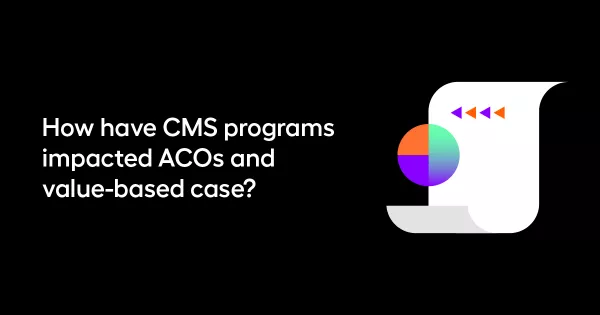Why do Medicare and CMS matter in value-based care?
For more than 55 years, America’s seniors, low-income families, people with disabilities, and others have benefited from the opportunities to gain medical insurance coverage through Medicare and Medicaid. The Centers for Medicare & Medicaid Service (CMS) was created in 1965 when President Johnson signed the legislation that established Medicare and Medicare.
Throughout the decades, the number and types of people eligible for coverage has expanded, and the benefits have increased. The most recent big change came in 2010 with the Affordable Care Act (ACA) bringing better coordination to Medicare and Medicaid to provide higher quality healthcare.
This article looks at the histories of each program and how they affect value-based care and the U.S. healthcare system overall.

What is Medicare?
Medicare is an insurance program run by the U.S. government that serves people 65 and older as well as people under age 65 with specific disabilities or End-Stage Renal Disease. Currently, it provides coverage for more than 55 million program participants.
Medicare is supported by taxpayers and most people pay nothing for Part A annual premiums because they have previously paid into the system for at least 10 years through their taxes, and small premiums for Parts B, C, and D depending on coverage. CMS announced that 98% of providers participated in Medicare in 2022.

What are Medicaid and CHIP?
Medicaid is designed to provide healthcare coverage for low-income people. Each state has its own system and coverage varies from state-to-state. According to CMS’ Annual Enrollment Report, 83.5 million people received Medicaid coverage in 2022. It is the largest source of health coverage in the U.S.
CHIP is the Children’s Health Insurance Program. It was signed into law in 1997 to cover the gap in insurance coverage for kids whose families don't qualify for Medicaid, but can’t afford private insurance. Just over 9 million children were enrolled in CHIP in 2020.
Some instances might be preventable, but as heart disease is the leading cause of death for men and women in the US from most backgrounds, chest pain is a valid reason to head straight to the nearest hospital.

Why do Medicare, Medicaid, and CHIP matter in value-based care?
The ACA acted as a catalyst for payment models that, unlike fee-for-service, emphasize value over volume in health care delivery. Medicare, as the largest payer in the country has an outsized role to play in the drive toward value-based care.
The Medicare Shared Savings Programs brings groups of hospitals, doctors, and other providers together in Accountable Care Organizations (ACOs) which are responsible for the quality of care, care coordination, and health outcomes of groups of beneficiaries. CMS has set a goal of having everyone covered by Traditional Medicare (Parts A and B) in an accountable care relationship by 2030.
Similarly, managed care is a delivery system designed to “manage cost, utilization, and quality.” States reduce their Medicaid costs by contracting with managed care organizations. They also strive for improvements in health plan performance, health care quality, and health care outcomes under the program.

What is ACO REACH?
CMS announced the ACO REACH Model in February 2022. The program is a redesign of the Global and Professional Direct Contracting Model (GPDC) Model. It went into effect as of January 1, 2023 and it aims to change three major aspects of its predecessor: advance health equity to bring the benefits of accountable care to underserved communities, promote provider leadership and governance, and protect beneficiaries with more participant vetting, monitoring, and greater transparency.
The initial cohort will engage over the next four years. ACO REACH could potentially have a significant impact on modern healthcare, with the lessons learned from this test affecting the way the Medicare Shared Savings Program and other programs operate in the future.

How do Medicare and Medicaid address health equity and social determinants of health?
The goal of both Medicare and Medicaid from their conception was to provide healthcare coverage for those who didn’t receive care from other payers (typical through employer-based coverage.) Today, CMS continues to close that gap and take other important steps to improve health equity and address social determinants of health. It established a Framework for Health Equity designed to support its work driving structural change across the healthcare industry and eliminating barriers to its benefits and services.
It also outlined five health equity priorities to reduce healthcare disparities:
- expand the collection, reporting, and analysis of standardized data
- assess causes of disparities within CMS programs and address inequities in policies and operations to close gaps
- build capacity of healthcare organizations and the workforce to reduce health and healthcare disparities
- advance language access, health literacy, and the provision of culturally tailored services
- increase all forms of accessibility to healthcare services and coverage.

How have CMS programs impacted ACOs and value-based case?
Healthcare works differently in every country, but in the U.S. CMS plays an unprecedented role in shaping the system. The relationship between ACOs, value-based care organizations, and CMS is necessarily tight-knit — success happens only in their collaboration. See CMS and ACO collaboration at work on caring for diabetic populations, and how data helps drive accurate reporting and more value recouped.
